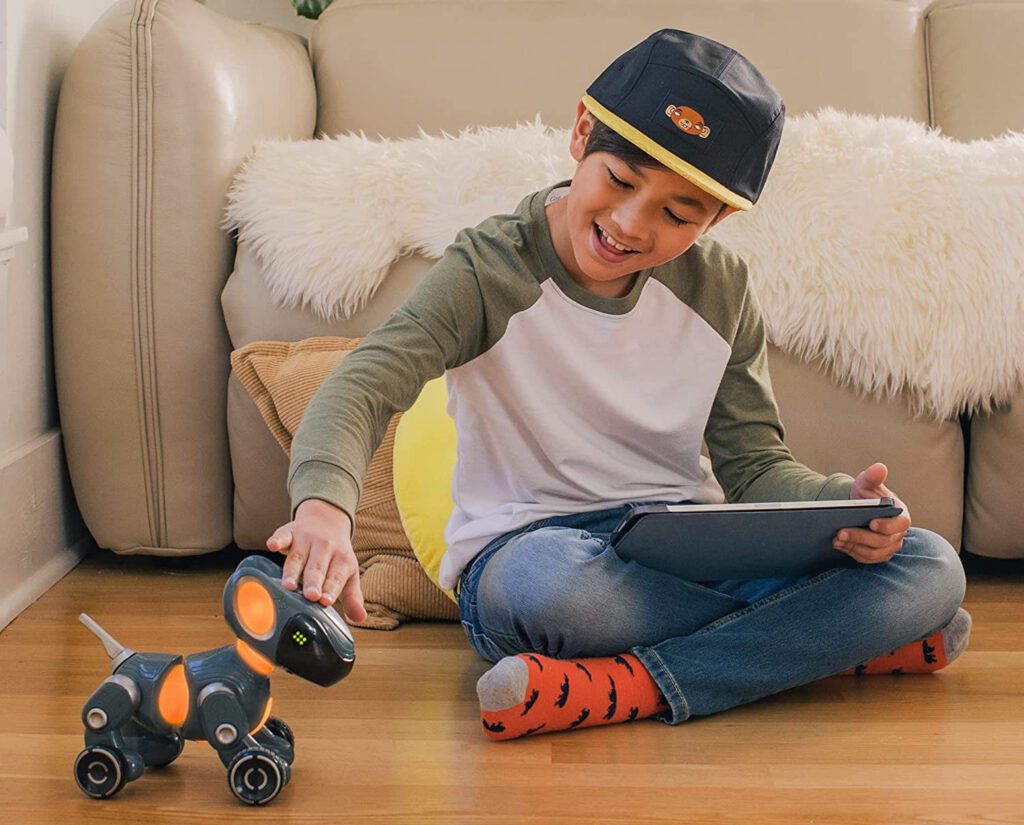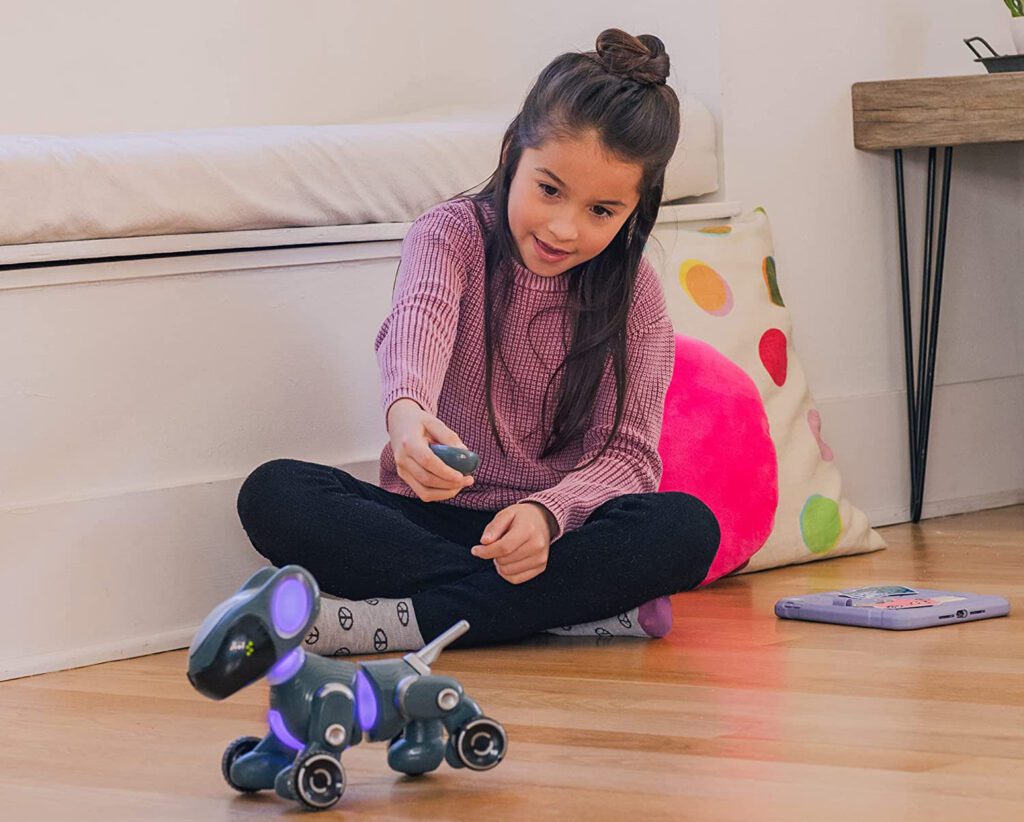We live in a world run by computers and those computers are run by code. So, learning how code works is a great way to set kids up for a successful future in STEM.
PYXEL: A Coder’s Best Friend from Educational Insights is a robot pet that kids can code to do tricks. Kids ages 8 and up can code PYXEL using two coding languages: Blockly, a block-style programming language that is easy for beginners to learn, and Python, one of the most popular programming languages used today.

To set up PYXEL, kids need a laptop, a tablet, or another Wi-Fi enabled device. When kids switch on PYXEL, a new Wi-Fi network will show up on the device. Then, kids can go to local.codewithpyxel.com to reset the Wi-Fi network password. Once the password is reset, kids can reconnect to the network and start coding! Adults may want to help kids with this, as it can be tricky. If the PYXEL does not reconnect to the Wi-Fi, try forgetting the network and then sign back on.
Once PYXEL is fully connected to the network, it’s time to start coding! I would recommend kids start to code with the Blockly program, as it is much easier to understand than Python. However, both programming languages come with six tutorials showing kids how different coding elements work.

Using code, kids can make PYXEL wag its tail, make noises, and react to different senses, including touch, proximity, and sound. While the proximity sensor worked really well for me, PYXEL wouldn’t always respond to touch and sound. As kids get more experience, they can also add in if-then scenarios, object avoidance, and more!
One element of PYXEL that I really liked was volume control. When kids are programming PYXEL to make sounds, they can choose to have the volume be low or high, which is great for adults who want to encourage coding, but may not enjoy all the noise that comes with it.

When kids are done writing their code, they can send the program to PYXEL using the send button — which only runs the program once — or add it to the code activator, a remote that saves six programs at once. I noticed that sometimes the code does not get sent to PYXEL or the code activator right away, so kids may have to send it more than once before PYXEL can show off the code! While kids are coding or waiting for code to send, PYXEL will sometimes do spontaneous things, such as wagging its tail, sniffing nearby objects, or even peeing (PYXEL does not actually pee, it just makes a peeing noise).
PYXEL is a great educational toy that kids can use to learn coding, especially for those who are just getting started on their explorations in STEM. Who knows: They could be the next Ada Lovelace or Bill Gates!

